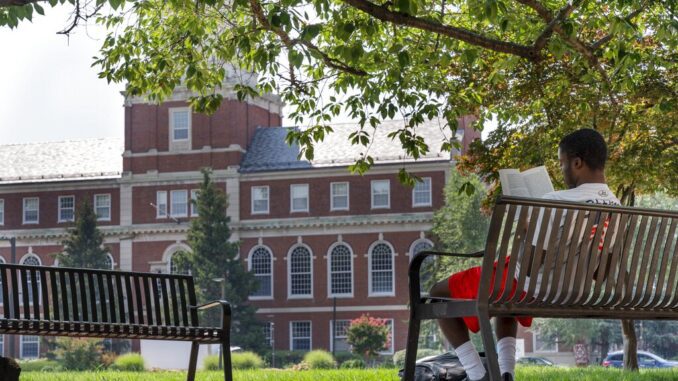
BOSTON — International students are returning to U.S. colleges in stronger numbers this year, but the rebound has yet to make up for last year’s historic declines as COVID-19 continues to disrupt academic exchange, according to a new survey.
Nationwide, American colleges and universities saw a 4% annual increase in international students this fall, according to survey results released Monday by the Institute of International Education. But that follows a decrease of 15% last year — the steepest decline since the institute began publishing data in 1948.
Universities and U.S. officials hope this year’s uptick is the start of a long-term rebound. As international travel ramps up, there’s optimism that colleges will see growth past their pre-pandemic levels.
“We expect a surge following the pandemic,” Matthew Lussenhop, an acting U.S. assistant secretary of state, told reporters. This year’s increase indicates that international students “continue to value a U.S. education and remain committed to pursuing studies in the United States,” he added.
Overall, 70% of U.S. colleges reported an uptick in international students this fall, while 20% saw decreases and 10% remained level, according to the institute. That’s based on a preliminary survey of more than 800 U.S. schools.
At least some of the increase is due to new students who hoped to come to the U.S. last year but delayed their plans because of the pandemic. All told, there was a 68% increase in newly enrolled international students this year, a dramatic increase compared with last year’s decrease of 46%.
For many schools, even a modest upturn is a relief. Over the summer, officials at U.S. universities worried that the Delta variant would dash any hopes of a rebound. But for many, that did not come to pass.
In August, U.S. embassies and consulates in India reported that they had issued visas to a record 55,000 students even after starting the process two months late because of COVID-19.
The vast majority of U.S. colleges returned to in-person learning by this fall, but not all international students are physically on campus. After last year’s shift to remote learning, many schools have continued offering online classes to students abroad.
For some colleges, the new flexibility of online learning helped avoid further enrollment setbacks. In the past, students at the University of San Francisco might have been able to start the term a week late if they faced visa or travel problems. Now, those facing visa delays can arrive halfway through the term or later, and in the meantime study online from abroad.
That was the case for Vinh Le, who was unable to get to the airport in Vietnam’s Ho Chi Minh City in time for the start of fall classes. Instead, the graduate student studied online for more than two months until he could get his first vaccine shot, which allowed him to travel. He arrived at the University of San Francisco on Nov. 1.
International students are seen as important contributors to U.S. campuses for a variety of reasons. Colleges say they help provide a diverse mix of cultures and views on campus. Many end up working in high-demand fields after graduating. And some colleges rely on the financial benefits of international students, who are typically charged higher tuition rates.
Although many colleges avoided a second year of declines, there’s still concern that the upturn may be isolated to certain types of colleges. The survey found that, last year, community colleges suffered much steeper declines than four-year universities, with a 24% backslide nationwide.
Researchers are still analyzing this year’s data, but some worry community colleges may continue to lag behind.
There are also questions about whether the rebound will continue. New vaccine requirements for foreign travelers could make it harder for some students to get here, and colleges are expecting continued competition from colleges in Australia, Canada and other nations looking to boost international populations.
Still, officials at many colleges are optimistic. More vaccines are being sent overseas, and newly lifted travel bans promise to reduce barriers to travel.


